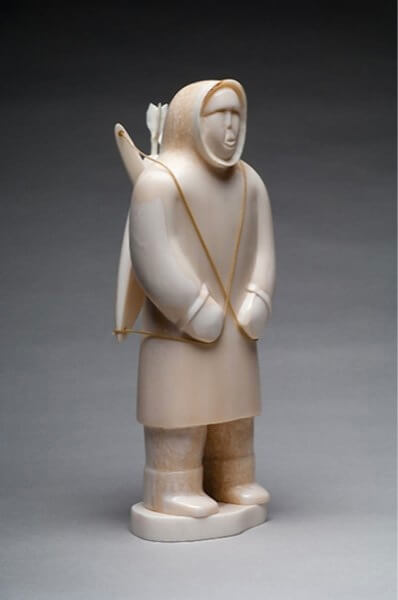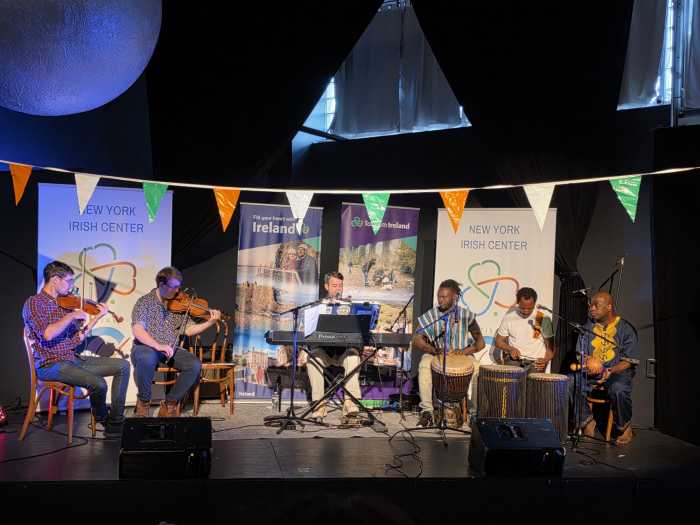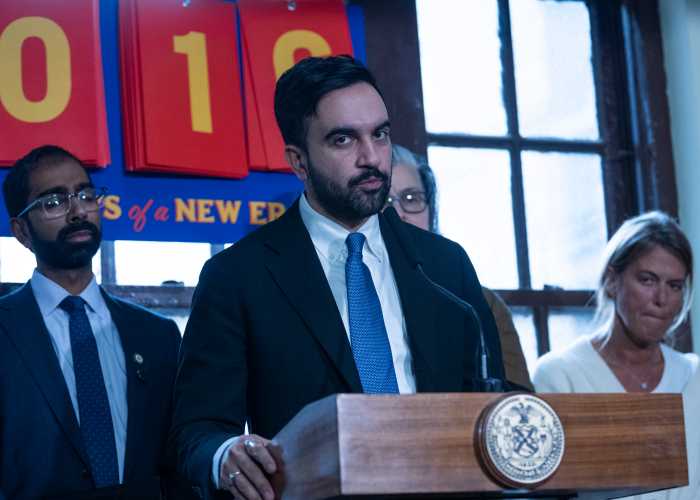By Merle Exit
Traditional African Art: The Liren Wei Collection opened at the QCC Art Gallery Oct. 18 and is running through Nov. 30.
Objects featured in the exhibit originating from West African savannah to the forests of the Congo Basin are certainly not ordinary, according to Wei.
Wei, a practicing CPA and long-time friend of the QCC Art Gallery, said that he has a passion for African art.
“It’s a journey that I started back in the mid-‘80s after I dropped out of medical school,” he said. “Hanging around Soho, I came across this African art which I had never seen before. I had found it to be a natural and basic art form that talks to the human soul. This is my personal collection.”
The collection displays items such as large, poly-chromed Bozo puppets depicting whimsical antelopes, crocodiles and people. Some of the delicate sculptures on display are made from wood, metals, stone and ivory adorned with horns, beads, shells, terracotta, cloth, feathers, quills, fibers, leaves and roots. And some objects, such as ancient Bamana Komo and Kono masks, are meant to convey sacrificial themes centering on the rituals of secret initiation societies for men.
Wei said that although we view these pieces as “art,” in the native African culture they all serve some sort of a purpose such as a funeral or festivity.
“Every area of Africa has its own distinctive look and feel,” he said. “Once you get to know African art, you can tell where the piece came from.”
One piece that Wei has an attachment to is a bronze ceremonial object from Cameroon which he had purchased from what would be the king of a village.
Art connoisseurs Dr. Pat Imperato and Leonard Kahan are the curators for the exhibit.
“Dr. Imperato spent time in Africa as a doctor and has a passion for art and is known to be an expert in this area,” said Wei, while Kahan used to have an African art gallery before he retired and is also considered an expert in this area.
Faustino Quintanilla, the executive director of the QCC Art Gallery, is thrilled to have Wei’s “impressive” collection on display.
“This substantial exhibit is important for our students and other visitors to experience because African art has great significance, in particular the African masks which reflect the many universal expressions and complexities of human nature,” Quintanilla said.
A second exhibit opened the same day. “Carving Life: Walrus Ivory Carvings from the Bering Sea,” displays intricate sculptures of animals, everyday life scenes, spiritual ideas and abstract concepts.
The display is running through Jan. 17 and is curated by Imperato, the collector, artist and author. She will be sharing her expertise of the Alaskan Inuit history and art as well as her personal encounters with many of the carvers of this collection.
Among the carvings on display you will find a hunter in a kayak, another leading a dog sled team, and another with his harpoon poised for a strike.
There are carvings that depict women engaged in seal skin cutting and stretching as well as berry picking, which express the more domestic side of a life.
Two particular pieces of note are a sculpture of an emaciated women embraced by a seal and the sculpture of a hunter with a seal embedded in its midsection. Both serve as powerful examples of the relationship that exists between the animals that provide nourishment and those who are nourished by them.
Imperato said that her meetings with native carvers, “have enriched and enlightened me with a deeper understanding of their culture.”
“Their carvings have heightened my appreciation of their artistic expression and individual styles,” she said. “I hope that when we admire their carvings, we will understand not only their history and their present struggle, but more importantly, the connection we all share. This will spur all of us to work together for the benefit of humankind.”






































